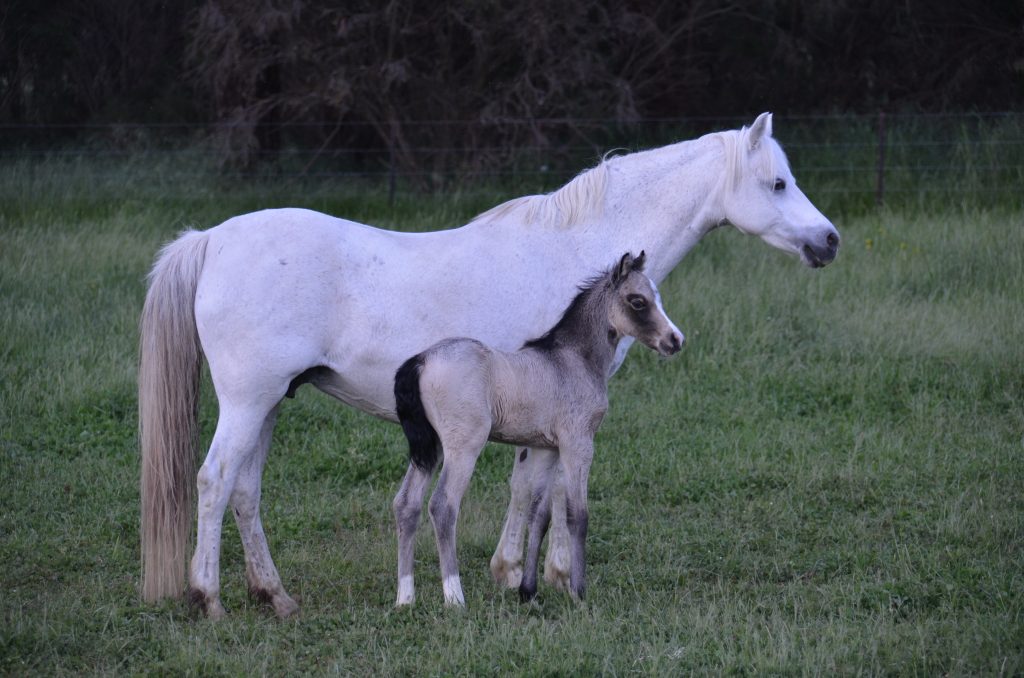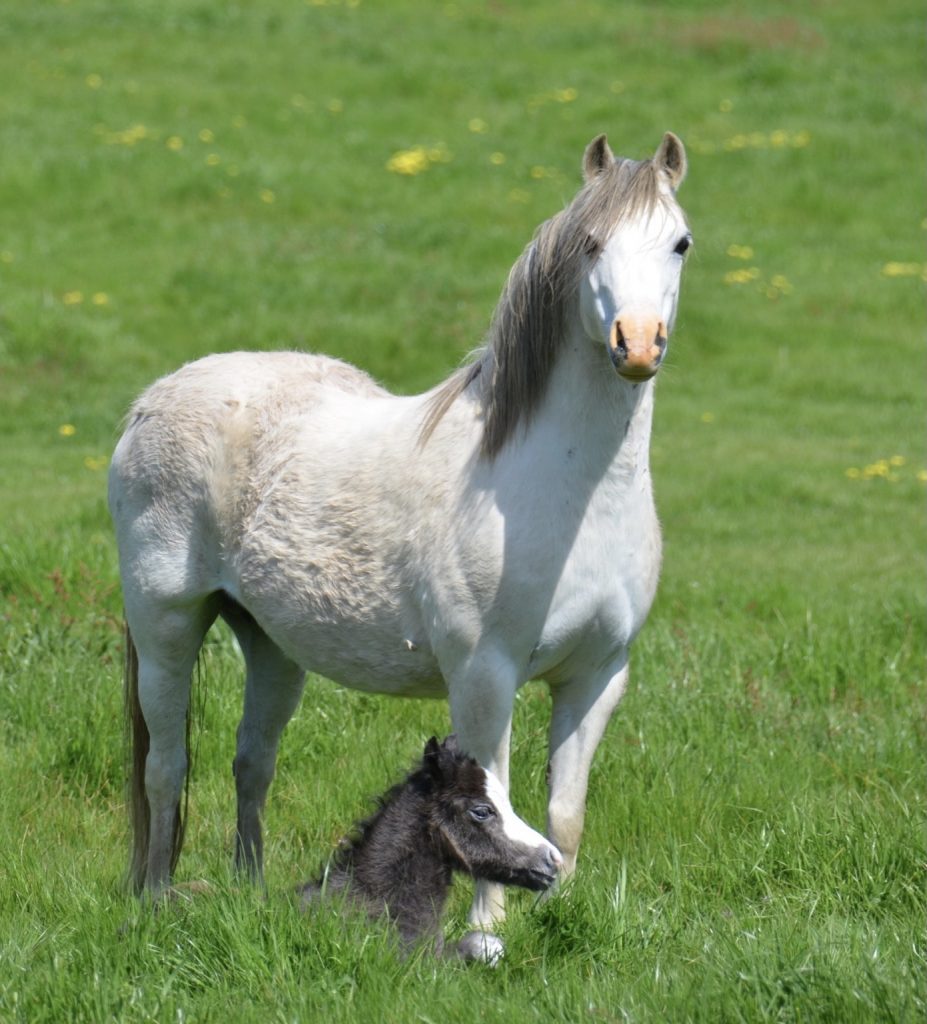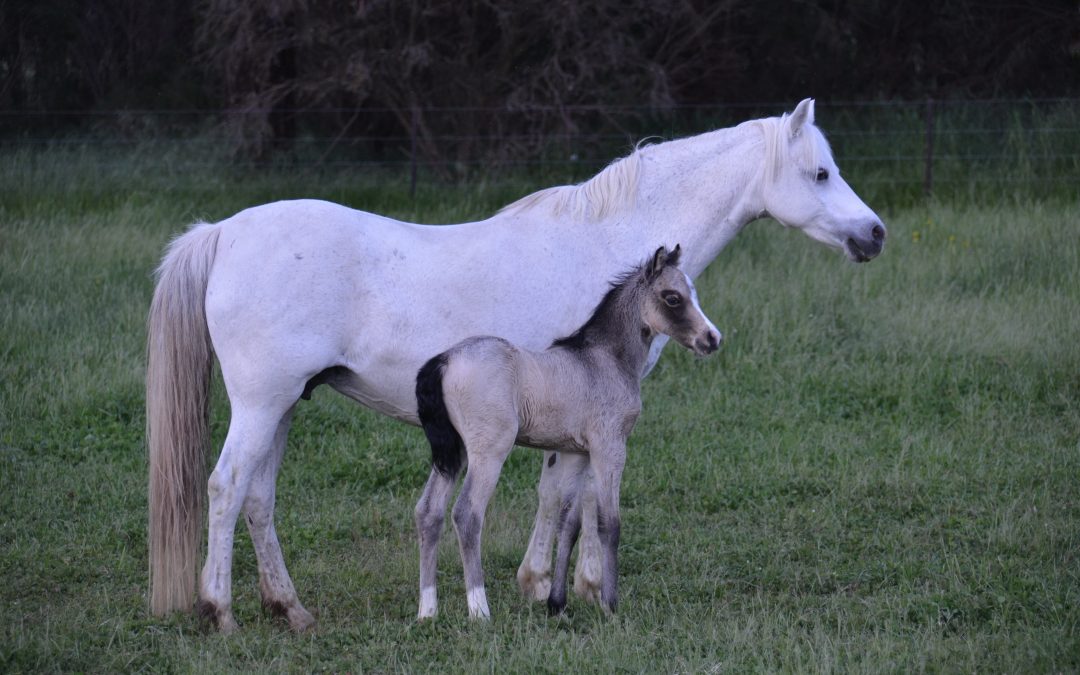Disclaimer: The information given in this article has been obtained from Dr John Kohnke BVSc RDA & his team at https://www.kohnkesown.com/. The source of images in this article will be stated below each image and may have been sourced from Dr John Kohnke’s original content or licensed under creative commons licenses.
All mare owners and breeders want their pregnant mare to produce a well-developed, healthy foal with no difficulties during foaling. There are a number of important management practices that should be carried out in the last three months prior to foaling that will help to ensure that the mare remains healthy and able to feed and care for her newborn foal. Careful management will help to minimise foaling problems and assure a healthy start to the young foal’s life. It will also help maintain her fertility to enable the mare to be bred again and conceive during the first 4-6 weeks after foaling.

Feeding During the Last 3 Months
An unborn foal doubles its size during the last 3 months (last trimester) prior to birth. This rapid rate of development increases the demand for energy, protein and trace-minerals for the mare to pass into her unborn foal through the membranes. During this time of higher demand of late pregnancy, the grazing mare approaching foaling has a reduced gut capacity to carry the bulk of feed required, less energy is available from winter pasture and there is often extra energy drain due to the cold wintery weather in most areas. The mare also has to build up reserves to meet the elevated needs in preparation for milk production and to maintain optimum fertility in the first 2 months of the post foaling period to enable her to breed commercially at 12 month intervals. A heavily pregnant mare should be provided with a higher energy diet containing more grain or prepared feed concentrate to provide energy, as well as protein, calcium and other essential nutrients to fuel the growth of her unborn foal.
Avoid Excessive Condition
It is important to try to maintain a pregnant mare in a ‘trim’ condition, preferably with a ‘fleshy covering’ and last 2-3 ribs just covered. Heavily conditioned or overweight mares are more likely to have difficulties at foaling. An overweight mare may also produce reduced volumes of lower protein milk after foaling, which may limit the growth rate of her foal to weaning age.
As a working guideline, you should plan to increase the energy and protein levels by 10% per month to meet needs by adding an additional 200g concentrate per 100kg bodyweight (remember the unborn foal adds 15% to the pregnant mare’s bodyweight), or roughly 1 kg of concentrate over the 9th and 10th month of pregnancy to maintain a 500kg mare in a ‘fleshy’ but not overly fat condition. This additional amount of concentrate as mare cubes, pellets or even grain, such as oats or barley, will depend on the seasonal conditions and the available grazing in the paddock.
Pre-lactation
Most mares start to ‘bag up’ and ‘wax up’ within the last 2-3 weeks before foaling. However, up to 12.4% of mares pre-lactate or ‘run their milk’ before foaling, depleting the amount of concentrated protective antibodies contained in their first milk to pass on to their foal. If a mare begins to pre-lactate for more than 3-4 days prior to foaling with large volumes of sticky, white colostrum splashed down the insides of her hind limbs, the full reserve of about 750mL for a 500kg mare of highly concentrated initial colostrum milk may be drained away.
A newborn foal born to a 500kg mare needs to take in about 500- 750mL of concentrated colostrum milk within the first 6-12 hours after birth to establish protective immunity in its blood. This will ensure adequate immunity against common environmental microbial diseases for the first 12 weeks of life until its own immune system can produce antibodies starting at 4-6 weeks after birth. The low level of immunity in a young foal occurs at between 5-7 weeks after birth when the colostrum immunity is being depleted and its own immune system is immature or slow to respond.
It takes about 4 weeks for a mare transferred to a new locality to become sensitised to local microbial populations and environmental ‘flora’. It is good practice to bring a mare home from a stud for foaling, or send her to a stud to foal down, about one month before she is due to foal, so that she can pass on antibody immunity to the local ’flora’ in her colostrum to her newborn foal.
Check with your vet and arrange a concentrated antibody drench or serum transfusion (at about 20mL per kg birth weight of the foal) during the first 12 hours after foaling if you have a mare which has pre-lactated and is likely to have depleted her colostrum reserves in the few days prior to foaling.

At the time of Foaling
A healthy, newborn foal is well adapted for survival, but special precautions should be taken to reduce stress and risk of disease by careful foaling and post-natal management. The majority of healthy mares have little difficulty in foaling, although overweight and fat mares, or very old mares are more likely to be less fit and lack muscle tone to ensure a quick and explosive foaling action over a 5 minute period. Obviously, these mares require more careful observation and any difficulties or a delay in the foaling process can increase the stress on the newly dropped foal. If a mare is having difficulty in foaling, it is best to get her to stand up and walk around on a lead for a couple of minutes and call your vet for advice. In most cases, the malpresentation will correct itself, but if a mare is still having difficulty, repeat walking her around until your vet arrives. Do not take a dog near a foaling mare as this may interrupt her foaling process. Keep onlookers to a minimum. If possible have a large stable or covered area prepared in advance and walk the mare carefully to the area up to 50 metres away, so that she is sheltered and warm as she foals. Have a bucket of warm water and clean towels ready for your vet’s arrival. Ensure that your torch has strong batteries or arrange for a vehicle to be parked near the mare to enable its headlights to be used (low beam) to provide light for your vet if the foaling is in a paddock at night.
Check the Foal and Mare at Birth
If you are present at the birth, ensure that the membranes are free from the foal’s nose once the foal is born and on the ground. Avoid too much intervention – allow the mare to remain down and resting. Up to one third of the foal’s blood volume is transferred from the membranes within 1-2 minutes after foaling – leave the umbilical cord intact until the foal attempts to move away. The foal will normally break the cord itself as it moves or the mare stands up. If a mare remains standing when delivering her foal, carefully support the weight of the foal (it will be slippery and covered in fluids) to avoid it falling to the ground. Hold the mare firmly at the position so that the cord remains intact for 2-3 minutes to allow blood transfer. If it is Handy Hint 6 Stimulate a Mare’s Immunity Prior to Foaling Ideally, a pregnant mare needs to be exposed to the environmental contamination and profile of microorganisms, such as bacteria which cause scours, joint-ill and septicaemia, for at least 2 weeks prior to foaling down on a stud. In fact, studies have shown that up to 4 weeks exposure to germs in the paddock or foaling environment, is needed to provide adequate levels of environmental specific antibodies as immunoglobulins in her colostrum milk. raining or very cold, attempt to walk the mare and carry the foal at the level of her nose to a sheltered area or a stable with clean bedding. Always place the foal on a horse rug or an old ‘doona’ to help keep it clean and off the cold wet floor or ground.
Check List:
- Check the mare for foaling lacerations – seek advice from your vet if necessary.
- Check that the cord breaks and the foal is vigorous.
- Check the mare’s membranes – they should come away (expelled) within 1-2 hours – check that the full membranes are present by spreading them out. If in doubt – seek advice from your vet.
- Once the foal is standing, check for any abnormalities. Attend to the Cord -The umbilical stump should be sprayed with 10% iodine solution or cetrimide spray to help dry it up and reduce the risk of infection. If the stump is soft and leaking fluid (urine), seek advice from your vet.
Birth weight is a critical guide to the vitality and chances of survival as well as the foundation for future growth and development of the newborn foal. Foals weighing less than 35 kg at birth for a 500kg mare virtually have little chance of growing and achieving adequate early growth targets up until 2 years of age.
For more detailed information related to foaling, please visit https://www.kohnkesown.com/ website and download the ‘Talking breeding Issue 4’.

